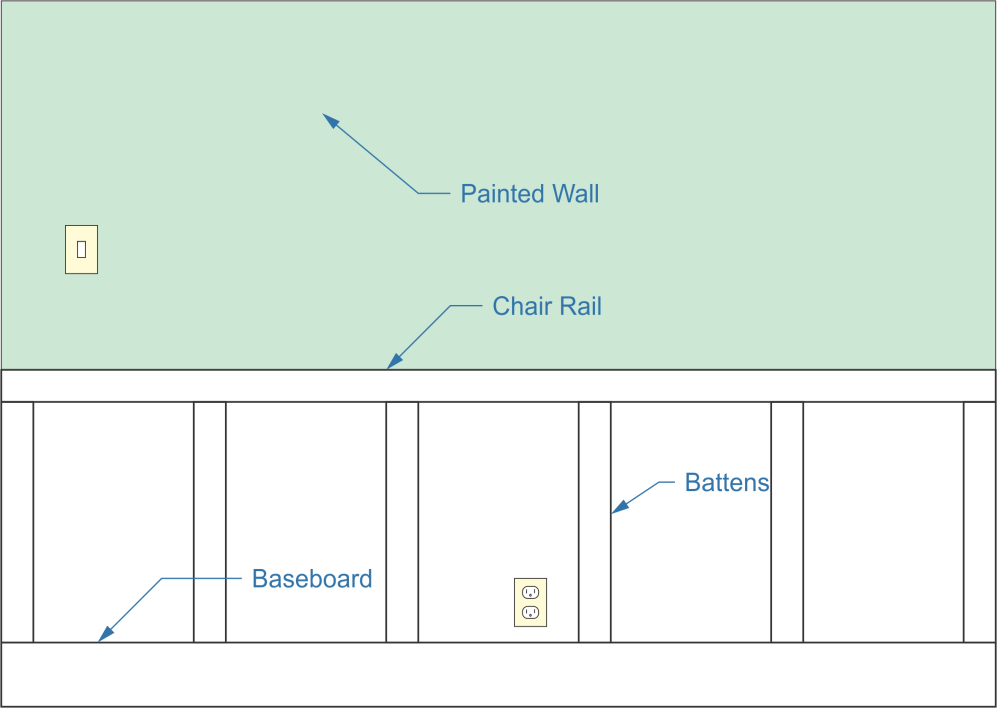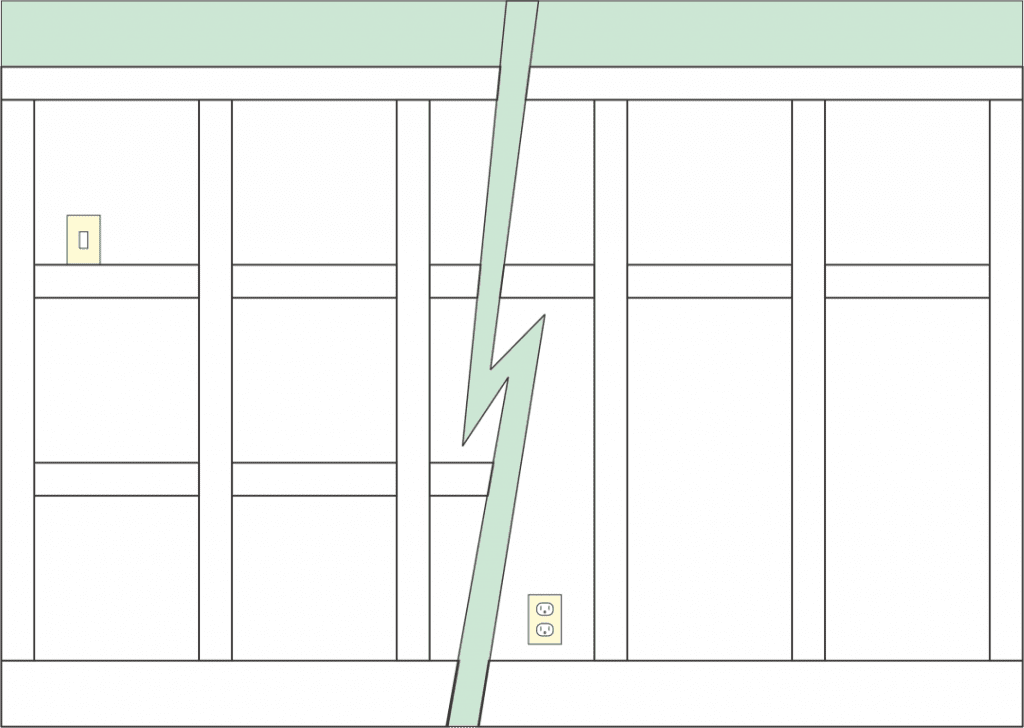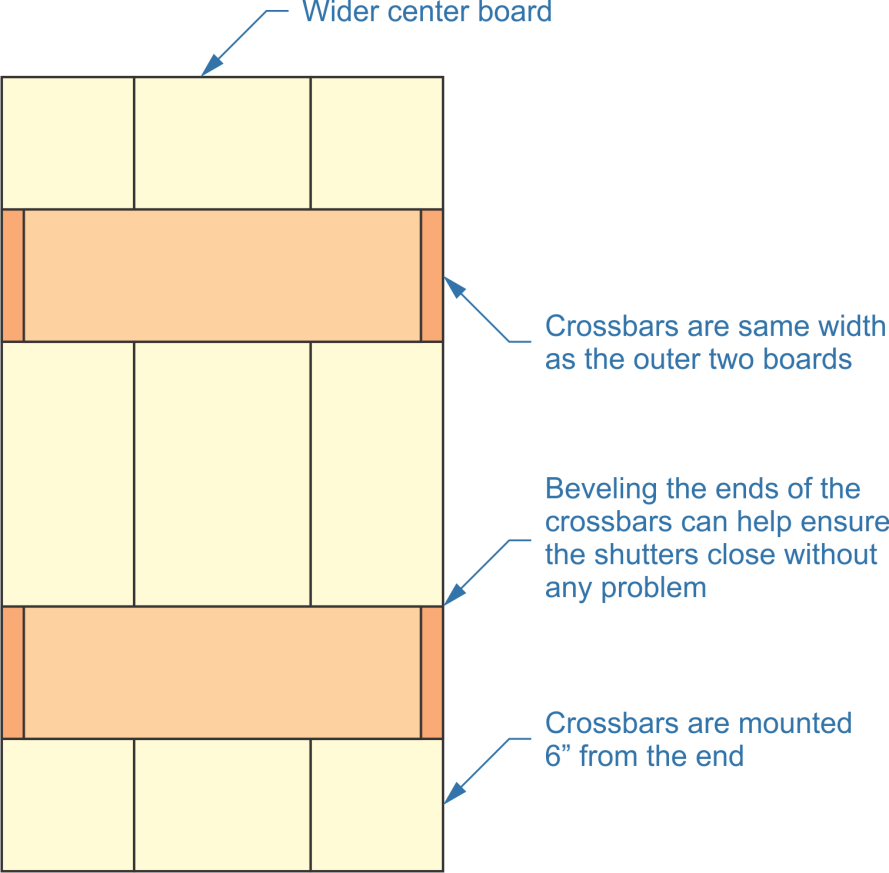Board and batten style has made a resurgence lately. While many people think of it as a “modern style,” it goes back over 200 years. Farmers, many of whom were European immigrants, used board and batten style to build their barns because it was an easy way for people who were not professional carpenters to build rain-resistant buildings.
Classic board and batten consists of siding that is made of vertically-mounted boards, with thin strips of wood, the “battens,” covering the seams between the boards, even in cases where caulking wasn’t used. This prevented water from leaking in between the seams.
The other style of construction which was common in that time was clapboards. But the clapboards back then and today’s clapboard siding had little in common. Today, clapboards are engineered wood products, that are dimensionally consistent. They are installed so that each board overlaps the one below it, preventing rainwater from leaking in. But clapboards that were made 200 years ago were solid wood boards, which were chamfered on the edges. They were installed flush with the framing, with the chamfers overlapping in a way that would prevent rainwater from seeping in.
While board and batten is normally used only with wood, it is possible to install battens over other construction materials, such as Hardie Board. Board and batten look-alikes have been made in Hardie Board as well as vinyl siding, molding the batten into the panel. The James Hardie Company also makes batten strips which can be used over their vertical siding panels, producing a board and batten look that mimics real wood.
Today, board and batten is used for both the interior and exterior of homes. On the interior, it is just decorative and typically comes short of covering the whole wall. Rather, it is installed more like wainscoting, with the top either being chair-rail height or three-quarters of the wall’s height.
Installing Board and Batten in the Home
Installing board and batten in the home can, like most wood trim, make a home look more elegant. In most cases, it is an extremely easy project for anyone with modest carpentry skills. The biggest concern is cutting the material accurately, to ensure a tight fit of the various parts.
Think it Through First
But before cutting any material, a few decisions have to be made. The first of these is how high the board and batten will run up the wall. While it is possible to go full wall height, that is rarely done. This leaves the decision as to whether the top will be below the switch plates on the wall or above them. Wall switch plates are normally mounted 48” above the floor, while the normal height of chair rail is 28” to 32”.
With the height decided, the next question is whether a textured wall showing through the battens is acceptable. If this doesn’t provide the look desired, then the wall will have to be covered with a thin material, such as hardboard (sometimes called masonite) or luan plywood. Hardboard should not be used if enamel paint is going to be applied, as the two don’t work well together.
It is also possible to smooth the wall out by either sanding off existing texture or leveling it back out with a couple of layers of drywall mud. Leveling the wall and then sanding it smooth is much faster and easier to accomplish than sanding off the existing texture, but not as fast as covering the entire area with some sort of smooth plywood product, such as the ones mentioned above.
Finally, the existing baseboard needs to be taken into consideration. Most architectural moldings do not work well with board and batten, because they taper down at the top edge. Board and batten walls will normally have a wide flat board used as a baseboard, without any shaping.
Smoothing the Wall
To start the installation, clean off the existing wall, removing everything that might get in the way of the board and batten wall. This includes existing trim, wall plates, an existing chair rail, shelves mounted to the wall and the baseboard.
Measure and mark where the top of the board and batten portion of the wall will be. Rather than measuring off the floor in a number of different spots, make one measurement, and then extend a line from that point by either using a level or a laser level. It can be helpful to tape this line with painter’s masking tape (above the line) as you will need to paint the board and batten once it is installed.
If the wall is to be made smooth again, that should be done, before anything else, regardless of the method being used. It is also a good idea to apply a coat of paint to whatever material is being used for smoothing out the wall. This will help ensure that it is sealed behind the battens.
When boards are used to smooth out the wall, they should be cut and installed to leave a ½” expansion gap at the floor level. However, the top of the board should reach the line that has been drawn and/or taped on the wall. This will put the top edge, where the chair rail will reach. Unlike normal chair rail used with paneling, there is no rabbet on the back side of the board, allowing it to overlap the edge of the panel, so the top of the chair rail and the top of this panel are the same height.
The panels can be attached to the wall using finish nails. One nail should be placed every six inches at the bottom, running into the wall’s bottom plate, and then the rest of the board should be nailed every 8 inches, following the studs.
If there are any wall outlets in the area being covered, it will be necessary to cut through the plywood material being used to cover the wall, before attaching it. This cut does not have to be exact, as the cover plates overlap the edges of the hole, allowing for a bit of variance. Nevertheless, a smoothly cut opening reflects the pride of the carpenter doing the work.
Adding Trim
There are two ways of going about the battens on an indoor installation. One is to use select grade 1” thick dimensional lumber and the other is to cut strips of plywood. A lot depends on the appearance desired. Even Select or Number 1 Common boards will have some knotholes in them, although they will be small and not have any voids. Number two common will have many more knotholes, which can provide for a more rustic look. If a truly smooth look is desired, without spending a fortune, then it makes sense to cut strips from some AB grade sanded plywood.
Rails and stiles for cabinet facings are normally cut from plywood, not solid wood. So there is plenty of precedence for making that choice. It will cost less than using boards, provide a smooth, knot-free surface and thinner wood can be used, if there is a concern about the battens sticking out too far.
The new baseboard is the first piece to be installed on top of the smooth wall. Typically 1”x 6” or 1”x 8” boards are used for this, or the equivalent size strips cut from plywood. Nail the baseboard to the wall with two finishing nails for every structural stud in the wall.

The top board for the board and batten wall needs to be installed next. It is typically the same width as the vertical battens. This is the equivalent of a chair rail, even though it may not be at the same height. However, unlike chair rail, it is installed over the panel (if one has been used to make the wall smooth) flush with the top edge. This board needs to be in place, so that the vertical battens can be measured and cut. As with the baseboard, use two finish nails per structural stud to attach this top piece in place.
Installing the Battens
Finally, the battens themselves are cut and installed. Don’t assume that the distance between the baseboard and chair rail will be consistent; it may not be, especially if the floor is not level. Rather, measure the location of each piece, to ensure a tight fit.
The battens can be cut to any width and spaced any distance apart. Typically, they are somewhere between 2 and 4 inches wide. Spacing them farther apart provides a richer look, for some reason, then putting them close together. Since they need to be nail to the wall, spacing them at 16”, so that they are over the studs, works out well.
Nail the battens to the wall, using a level to ensure that they are not slanted to either side. These should be nailed about every 8”.
Another Option
While the pattern discussed above is the most common way that board and batten interior walls are made, another option is to add horizontal battens as well. This is more often done with a larger atten area, such as taking ¾ of the wall height. These horizontal battens can either be added to divide the wall between the vertical battens into a square upper area with a larger rectangular area below or to have the whole area converted to squares.

Installing Board and Batten Outdoors
Using board and batten as siding is even easier as using it indoors, as there is no need to deal with existing wall texture. As a siding, it is one of the easier ones to install, whether Hardie Board is being used or wood siding panels.
The first step is to cover the entire wall with vertical sheets of wood siding or plywood. The base, top board and vertical batten boards are then nail over this base, ensuring that the seams between the boards are covered by the battens. Number 2 common dimensional lumber, either 1”x 2”s or 1”x 4”s, is normally used for this, rather than plywood, as plywood tends to soak up more water, as all edges have end grain exposed. This makes the plywood more susceptible to damage.
It is a good idea to apply a coat of paint to the plywood or siding, before the battens and other trim boards are installed. This provides a weather-seal for the underlying board. At the same time, it is also a good idea to caulk all the places where the batten boards, baseboard and top board some into contact with the siding, in order to keep moisture out of those areas.
Vinyl siding, designed to look like board and batten, is also available in 4’ x 8’ sheets. This is attached directly to the home’s sheathing and has the batten boards integral to the sheet, making it extremely easy to install.
The James Hardie Company also produces their own version of board and batten, which consists of vertically mounted siding boards, with their own brand of batten strips, made of the same material. The advantage of the Hardie system is that it is virtually indestructible, with a longer life expectancy than either wood or vinyl siding.
Making Board & Batten Shutters
Board and Batten shutters provide a nice look to the home, in contrast to the fake louvered shutters that are often installed. Not only are they better looking, with an “old world” charm, but they are functional as well. This can be extremely useful for those living in hurricane zones or other areas with high winds, where there is a risk of flying objects hitting the windows.
While they are still referred to as board and batten, the design of these shutters is a bit different than other board and batten work. That’s because there is no batten covering the seams between the boards. Rather, the seams are allowed to exist and a batten is attached perpendicular across the boards, to hold the boards together and give the shutter strength.
To make these shutters, start by measuring the window opening. Divide this number by two subtract about 1/8”. This will give the width of each leaf. For the height, subtract 1/8” to ¼” from the existing window opening.
Each leaf of the shutter needs to be assembled from three or four pieces of one-by dimensional lumber. Either number 1 or number 2 common boards can be used for this, depending on how rustic a final appearance is desired. Ideally, the shutter could be made of three boards the same width, such as three 1”x 6” boards. However, it is unlikely that the window opening will be 30-1/4” wide. Therefore, one of the boards will probably have to be cut to make up the exact dimension. This board, whether wider or narrower than the others, should be the middle board in the shutter.
The crossbars are cut from the same width dimensional lumber as the slats of the shutter. It is a good idea to bevel the ends of these, so that they don’t bind up in the window frame, when closing.
Once the boards are cut to size, they should be laid out on a workbench, with a stop at one end to ensure that they are aligned with each other. The crossbars or battens are then glued and nailed to each of the boards, using several nails per board. A square should be used to ensure that the battens are straight.

Once built, seal the seams and edges of the boards and paint to match your home. Considering their intended use, a heavy application of several coats of paint is a good idea.
Installing the Shutters
Board and batten shutters are not installed with door hinges. Rather, the hardware used looks more like gate hardware. However, these hinges are typically offset strap hinges, with a much smaller lintel part than gate hinges would normally have. This lintel part is what attaches to the window frame. These lintels have loose pins, allowing the shutters to be totally removed.
In addition to shutter hinges, you’ll need to install “shutter dogs”. These hold the shutter in place when it is open, yet still allow the shutters to be closed easily. Some sort of shutter bolt will also need to be installed on the shutters, once they are in place. Installing them to the shutter, after the shutter is installed, is slightly harder, but guarantees that the two parts of the shutter bolt will align with each other, making it easier to latch the shutters closed.



